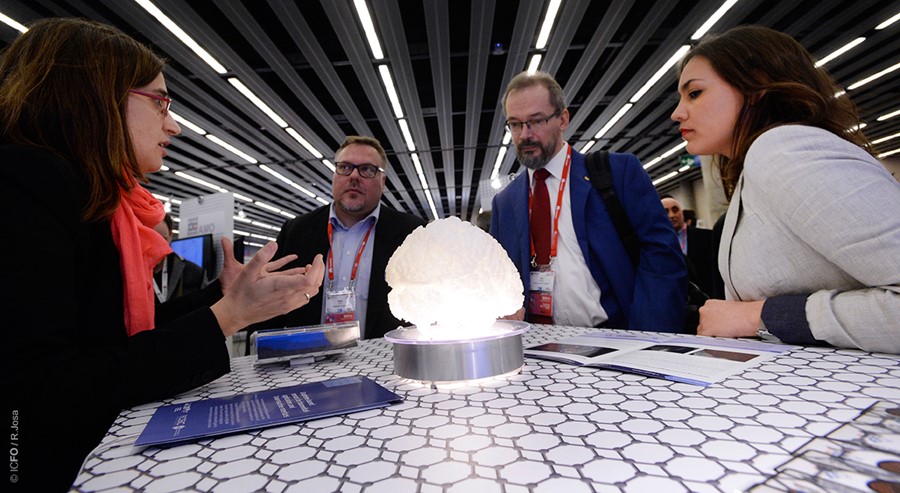Graphene Pavilion: Day Four
The fourth and final day of the Graphene Pavilion was as busy as ever. This was also the day that graphene was featured in the MWC conference programme.
The program of graphene talks started at the plenary session with a keynote talk by the Nobel Laureate Konstantin Novoselov who talked to a packed auditorium about graphene and other 2D materials. Tying in with the University of Manchester display at the Graphene Pavilion, he talked about how his group is working on a fully printable, active RFID for the internet of things. The big take home from his talk was that graphene, a brilliant material by itself, can achieve even more by coupling it with other 2D materials, creating multifunction heterojunctions which can be used, for example, as electric logic and memory devices. This message resonated with the audience, many of who are looking forward to the next level of innovation. The reach of this keynote spanned far beyond the walls of the auditorium - it was streamed in real time by MWC live onto every TV throughout the conference venue and watched by many more all around the world via the MWC live streaming website.
Following on from this keynote came the graphene focused session entitled 'Graphene Revolution'.
The session started by the session chair Prof. Frank Koppens (Science and Technology curator of the Graphene Pavilion), and he introduced graphene, its potential impact on the mobile sector. He also showed a real-life demonstration of a smartphone integrated with a flexible and transparent sensor measuring the blood pulsation in real-time.
This theme was continued by Dr Mike Banach from FlexEnable who showcased his flexible displays to great effect. Dr Vittorio Pellegrini from IIT Graphene Labs in Italy showcased his flexible batteries. He helped the audience understand how a little graphene goes a long way - explaining how 3g of graphene covered a whole soccer pitch and 1kg of graphene is enough to cover every screen in every mobile device in the world. Dr Tapani Ryhänen from Nokia talked about flexible sensors and wearable devices.
The crowd reacted with surprise when Dr Thanasis Georgiou from BGT Materials talked about how graphene can already be mass produced very cheaply - a fact that many people did not know. There was applause when Dr Georgiou showed a working RFID prototype live on stage as, again, many people didn't know that graphene could be used in devises or how close they are to being a commercially available product. The whole audience seemed transfixed by the idea of working graphene devises.
Presenting the work of the Graphene Flagship, Prof. Andrea Ferrari from the University of Cambridge, (Chair of the Executive Board of the Graphene Flagship), outlined the roadmap of the Graphene Flagship with its 10 year mission to bring graphene from the lab into industry. The speakers also called for business collaborations, stating how they were keen to listen to the challenges that the audience had and investigate how graphene could contribute to solutions.
The session was so well received that it ended with a spontaneous Q&A session with people expressing amazement about how much closer graphene is to enabling new technology than they thought. Visits to the Graphene Pavilion increased significantly after the session as a result.
The Graphene Flagship's participation in the MWC, which had first been discussed over dinner more than a year ago, has been an astounding success. Taking full advantage of the opportunity to bring graphene to so many people, our exhibitors have raised awareness, fostered collaboration and demonstrated graphene's potential - the cornerstone objectives of the Graphene Flagship.




